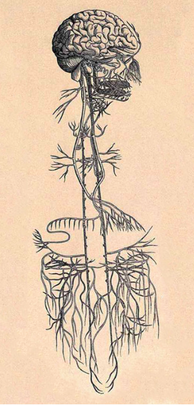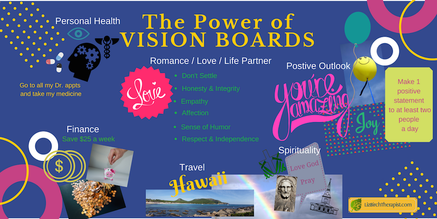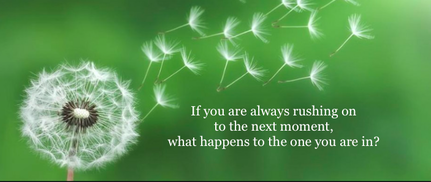 Anxiety is the number one reason people come into therapy. Are you trying to manage life with anxiety? Imagine what your life would be like if you were able to minimize your anxious thoughts? Imagine what your days will be like with more calmness. You may have thought about working with a therapist but just haven’t taken that step. When we are faced with the unknown we tend to avoid. I thought it might help if I shared with you what may happen in a therapy session with me as we work together on reducing that anxiety you’ve been living with. Follow along as if you are in session with me. Think about the questions. How would you answer them? Take notes. Go ahead and perform the coping exercise I describe. Now imagine you just walked into my calming office. Take a seat, anywhere you’d like. Let’s begin . . . I’d like to get to know a bit more about your goals and history of anxiety. What would you like to gain out of therapy and particularly this session? Anxiety feels different for everyone so therapy with me is very personalized for your specific issues. It’s also important to realize that therapy is a partnership between you and me – the therapist. I will be here to guide you, gently push you and help you realize that with your participation you can minimize your anxious thoughts. Have you ever been diagnosed with an anxiety disorder such as Social Anxiety, Obsessive-Compulsive Disorder, Panic Disorder, Post Traumatic Stress Disorder, or any specific phobia? Let’s get more specific about your goals. If you don’t have a goal in mind you won’t know when you’ve gotten there. What three goals are you looking to gain? They may be something like, decreasing your number of panic attacks, reduce your anxiety around specific relationship issues, decreasing performance anxiety at work. Share what your three goals are - the more specific, the better. Write them down. For each goal I’d like to know how your life would be different when you reach each goal. For example, “I’ll be able to perform better at work”, “It’ll be easier to socialize with others”, “I will have more days of the week with no panic attacks”. Write down how you imagine your life will be different with minimal or no anxiety. In order to continue to measure your improvement I will most likely have you complete a GAD-7 quick assessment often. It’s an easy 7 question rating scale. I’d like you to complete it at least once or twice a week. Completing this easy rating scale will help you track your improvement. I will provide you access to this assessment. Let’s put some focus on your symptoms and how they manifest for you. This is very important. Here are a few more questions. How long have you been trying to manage your anxiety? When does your anxiety affect you the most – at home, when you first wake up, at work, socially? When did your anxiety begin affecting you? What treatments have you had in the past? What treatments helped and which ones didn’t? It’s important to discuss triggers. What are your triggers that cause anxiety? For example, chronic stress, health issues, domestic violence, military duties, financial concerns, not feeling safe, etc. Write down all of your triggers. How have you been coping with your anxiety, if you have at all? For example, do you have specific ways of distracting yourself from the anxious thoughts? Behavioral coping skills might be walking away, exercising, taking a nap, focusing on slow breathing, etc. Some cognitive coping skills could be thinking positive thoughts, saying positive affirmations, brainstorming about solutions, thinking through and making a to-do list. Write down some ways you’ve been coping with your anxiety. You need actionable strategies and skills to overcome your anxiety. Having a physical awareness is important. What are your physical / emotional reactions to anxiety? Headaches, butterflies in your stomach, hands are shaking, feeling nauseous, your heart feels heavy today or an overwhelming feeling of just not feeling right. Focusing on your physical symptoms are very important. Your physical feelings work hand in hand with your thoughts. That’s the body and mind connection. We need to regulate our body first to regulate our mind. Lets focus on your body first so that you can regulate your mind. We can’t focus on one and ignore the other. I’d like you to work through this exercise so you can enhance your body and mind connection. You’ll be scanning your body with purpose so that you can regulate your body naturally. This is called a Somatic experience which focuses on the body. You can help your body calm down naturally. And remember you can’t relax your mind if you’re physically having issues such as trembling hands, headaches, pounding heartbeats. Dr. Peter Levine is the founder of Somatic Experiencing and introduced it in 1997. He introduced the exercise I’m going to describe below which will work through your physical symptoms. This exercise gently invites awareness back into the body and can create experiences of safety and calm. Go ahead and follow along below. Somatic Exercise: Get comfortable, sitting or laying down, at first you'll need to read through the instructions but eventually it's beneficial if you close your eyes. Put one hand on your forehead and one hand on your heart. Think about a mildly anxious moment and notice how you are physically feeling. How is your body responding? Just let yourself feel it. Pay attention to your hand on your forehead. Just be there and focus on your hand on your forehead. Don’t rush it. Notice any response. Now focus on your hand on your heart. Don’t do anything, just observe. Focus on any physical feelings. No need to address anything, just notice any feeling you have. Now go inside your body by focusing on any area between your hands, notice any sensations on your forehead, face, neck, shoulders, chest. Notice any physical feelings. How do those body parts feel? Do they feel tense, soft, fidgety, or comfort. Just notice it, be curious. Be with those sensations and wait for the shift. Notice how you are breathing, stay there, notice it. Now take your hand from your forehead and place it on your belly. Now focus on the sensations in your belly. Is it relaxed, tense, warm, cold, heavy, and/or tingling? No need to do anything, just notice the physical feelings and wait for the shift or change in your body. Now bring your attention to what’s going on. Notice any sensations that are going on in your entire body - your chest, back, neck, arms, fingers. Wait to notice any shift or change. Now take both hands and place them on your thighs. What sensations are you feeling? Gently press. Be observant, no need to do anything. Let your body just happen. Notice how it feels. Your body will regulate itself inside and outside. Notice how you are breathing. Count to three and slowly open your eyes and take a deep breath and bring your attention back to the room. Notice any shifts you may be feeling now. What specific parts were regulated? Give yourself 5 minutes to focus on your body. What body parts were stable and relaxed? Notice the relaxation in your body now? If there is some tension, what got in the way? Were you able to get out of your mind and focus on your body? Do you feel safe in your body and your environment now? The two key concepts in this exercise are feeling a sense of safety and a sense of present moment in your body. This beautiful mindfulness exercise only takes 5-10 minutes. It becomes easier and you will be better able to focus the more often you do it. This will create a better relationship within yourself and enable a sense of compassion and curiosity. I encourage you to practice this self-holding exercise at least two times a day in a neutral setting and neutral mood. Then describe how your mood is each time you complete this. Utilize a 10-point scale with 0 being neutral and 10 being very anxious. It’s important to check in with yourself. Practice this coping skill daily. If anxiety is something you’d like to reduce and you’re ready to begin healing, feel free to reach out to me. Schedule a free 15-minute consultation with me or go ahead and call to set up an appointment. At the moment I’m scheduling appointments about a month out, unless I get a cancellation. So don’t put this off. At the onset of this article I asked that you “Imagine what your life would be like if you were able to minimize your anxious thoughts? Imagine what your days will be like with more calmness.” I don’t want you to have to only imagine that any longer. I want you to begin living it. I’m looking forward to hearing your story. I am a licensed Marriage & Family Therapist who can provide services with anyone who resides in the State of California. I have also been trained in Clinical Hypnotherapy which is beneficial for more specific goals. Liz Birch, LMFT, CHt ~ 714-584-6047 ~ [email protected] The information provided through this website is for informational purposes only.
This information is not intended to and does not create a therapist-client relationship.
2 Comments
 The Vagus Nerve is the longest cranial nerve in your body. Vagus means “wanderer” in Latin, which accurately represents how the nerve wanders all over the body and reaches various organs. The Vagus Nerve is also a key part of your parasympathetic “rest and digest” nervous system. It influences your breathing, digestive function and heart rate, all of which can have a significant impact on your mental health. It’s important to increase the “tone” of your vagus nerve, as having a higher vagal tone means that your body can relax faster after stress. In 2010, researchers discovered a positive feedback loop between high vagal tone, positive emotions, and good physical health. So the more you increase your vagal tone, the more your physical and mental health will improve. Studies have shown that vagal tone is passed on from mother to child. Mother’s who are depressed, anxious and angry during their pregnancy have lower vagal activity. Once they give birth, the newborn also has low vagal activity and low dopamine and serotonin levels. Don’t worry if you think you might have a low vagal tone! You can take steps to increase it by stimulating your vagus nerve. This will allow you to more effectively respond to the emotional and physiological symptoms of your brain and mental illness. By stimulating your vagus nerve you can help treat mental health conditions such as depression and anxiety. So how does one stimulate their vagus nerve? Look at the list below! 1. Cold Exposure Researchers have found that exposing yourself to cold on a regular basis can lower your sympathetic “flight or fight” response and increase parasympathetic activity through the vagus nerve. Try finishing your next shower with at least 30 seconds of cold water and see how you feel. Slowly work your way up to longer periods of that cold-water blast. The lingering effects are worth it! 2. Deep and Slow Breathing Most people take about 10 to 14 breaths each minute. Taking about 6 breaths over the course of a minute is a great way to reduce stress. You should breath in deeply from your diaphragm. When you do this, your stomach should expand outward. Your exhale should be long and slow. This is the key to stimulating the vagus nerve and reaching a state of relaxation. 3. Singing, Humming, Chanting and Gargling The vagus nerve is connected to your vocal cords and the muscles at the back of your throat. Singing, humming, chanting and gargling can activate these muscles and stimulate your vagus nerve. This has been shown to increase heart-rate variability and vagal tone. 4. Meditation Research shows that meditation increases vagal tone and positive emotions and promotes feelings of goodwill towards you. Another study found that meditation reduces sympathetic “flight or fight” activity and increases vagal modulation. “OM” chanting, which is often done during meditation, has also been shown to stimulate the vagus nerve. 5. Exercise Not only does exercise help reverse cognitive decline but it’s also been shown to stimulate the vagus nerve, which may explain its beneficial brain and mental health effects. Walking, weighlifting and sprinting are the best forms of exercise but you should do what you enjoy so that you will maintain it consistently. 6. Socializing and Laughing Reflecting on positive social connections improves vagal tone and increases positive emotions. Laughter has been shown to increase heart rate variability and increase mood. And vagus nerve stimulation often leads to laughter as a side effect, suggesting their connection. So laugh with your friends as much as possible! Conclusion By stimulating the vagus nerve, you can send a message to your body that it’s time to relax and de-stress, which leads to long-term improvements in mood, wellbeing and resilience. So give some of the above suggestions a try and see if you can overcome some of the depression and anxiety that arise. http://pss.sagepub.com/content/early/2013/05/06/0956797612470827.abstract www.ncbi.nlm.nih.gov/pubmed/22894892 I am a licensed Marriage & Family Therapist who can provide services with anyone who resides in the State of California. I have also been trained in Clinical Hypnotherapy which is beneficial for more specific goals. Liz Birch, LMFT, CHt ~ 714-584-6047 ~ [email protected]  Most of us don’t even scratch the surface of knowing who we really are, let alone figuring out what we have the potential to become. We are so confused that we keep oscillating between overconfidence and low self-esteem. One minute we are filled with a definite purpose for life and the next we move to the opposite end of the spectrum and are completely desolate. Knowing ourselves better is a boon to our lives. We’re able to make smarter decisions about what’s best for us. We’re able to create more satisfying lives – lives that are based on our core values and personal priorities. Often our identities contain a lot of “shoulds”. In other words, we strive to be what we think we should be. These “shoulds” may derive from society or our family and friends. I should like this. I should be that. I should behave in this way. I should say that. Who we are gets confused with and buried under the layers of who we think we should be. Strip away the “shoulds”, and think about who you really are. Simply ask, “Who am I?” You can start with statements like “I am a daughter” or “I am a writer” and progress to “I am happiest when I’m laughing with friends” or “I am learning to be kinder to myself.” If we begin asking ourselves the right questions, it may take us to the answers we need to gain clarity in our own self-discovery and lead us to a more fulfilling and happy life. Here are 28 questions that open the door to help you in having a real conversation with yourself. Spend some times on these and answer them as honestly as possible. You may find some uncomfortable and some difficult. Don’t filter your answers by what you think others may think but rather be true to yourself. This is how self-discovery begins. Enjoy!
I am a licensed Marriage & Family Therapist who can provide services with anyone who resides in the State of California. I have also been trained in Clinical Hypnotherapy which is beneficial for more specific goals. Liz Birch, LMFT, CHt ~ 714-584-6047 ~ [email protected]  All top performers, regardless of profession, know the importance of picturing themselves succeeding in their minds before they actually do in reality. When you think of a big goal or dream that you want to achieve, it’s natural to think of all of the obstacles that will come your way. The problem is far too often we allow these obstacles to become so big in our minds that it inhibits us from moving forward. This is when many become satisfied with mediocrity. But what if you visualized yourself succeeding? What if you visualized yourself being the best in your profession? Consider these three examples:
If you can picture yourself achieving a goal, chances are you will. The more vivid you can get, the better it will work for you. What is a Vision Board? It’s a sacred place where you can place photos, trinkets, quotes, sayings, music lyrics, etc., anything you can think of, that represents your future goals and how you want to feel. Start thinking of your personal goals in life. Spend about 10 to 15 minutes picturing yourself achieving each one. Get as detailed as possible. Picture what you will do once your goal is reached. How amazing does it feel? How will this change the course of your life? Remember, the little details increase the likelihood of the big picture. A Vision Board gives you a visual to look at daily. Important: be sure to look at and focus on each entry on your Vision Board daily! Here’s how to create your Vision Board. What you’ll need:
How to do it: Turn off the TV and turn on some relaxing music. Light a candle and clear your space. As stated above, cut pictures, quotes, action words, feeling words out of magazines. You might want to use personal photos, pieces of fabric, coins, anything! When it comes to actually putting your stuff on the board, you may want to section your board off into themes, such as, “Finance”, “Career”, “Family”, “Romance”, “Travel”, “Personal Growth”, “Spiritual”, “Health”, or what ever you want. It might be helpful to leave space in between each item because clutter can be distracting. However, if you love the feeling of closeness and want everything to touch and overlap, then group it all together and overlap your objects. As for choosing what makes the final cut, lay everything out before you start gluing and pinning so you can get an idea of where you want everything. For ideas take a look at Pinterest! You'll find lots of Vision Boards. But remember, the most important part of your Vision Board is to look at it daily and remember your goals! I am a licensed Marriage & Family Therapist who can provide services with anyone who resides in the State of California. I have also been trained in Clinical Hypnotherapy which is beneficial for more specific goals. Liz Birch, LMFT, CHt ~ 714-584-6047 ~ [email protected] mind·ful·ness ˈmīn(d)f(ə)lnəs/ noun 1. the quality or state of being conscious or aware of something. "their mindfulness of the wider cinematic tradition" 2. a mental state achieved by focusing one's awareness on the present moment, while calmly acknowledging and accepting one's feelings, thoughts, and bodily sensations, used as a therapeutic technique.  Relationships are the cornerstone of a good life both emotionally and physically. Relationships (for this article) don’t only mean between two people that are connected by blood or marriage, but are also interactions between two or more people in any setting. We may have a relationship with members of our community, co-workers or people we worship with. So when I refer to relationships it can be with anyone we encounter and how we talk, behave or deal with each other. It’s been highly reported that being in satisfying relationships lead to a happier life with fewer health problems as well as reduced depression and cognitive decline. So you can deduce that being involved in relationships that are unsatisfying or negative can lead to negative health effects and poor daily outcomes. So, now lets talk about relationships and mindfulness. To be sure you understand mindfulness – “mindfulness” means maintaining a moment-by-moment awareness of our thoughts, feelings, bodily sensations, and surrounding environment. Research on mindfulness at the University of Massachusetts Medical Center and at the Harvard Medical School shows that the majority of people who attend an eight-week mindfulness-based stress reduction course reported lasting improvement in both physical and psychological symptoms from conditions such as heart disease, migraine headaches, some auto-immune diseases, obsessive thinking, anxiety, depression, and hostility. They also report an increased ability to relax, greater energy and enthusiasm for life, improved confidence and self-esteem, and more effective coping with both short-term and long-term stress. Mindfulness involves acceptance, meaning that we pay attention to our thoughts and feelings without judging them—without believing, for instance, that there’s a “right” or “wrong” way to think or feel in a given moment. When we practice mindfulness, our thoughts focus on what we’re sensing in the present moment rather than bringing up the past or forecasting into the future. Here’s a closer look at mindfulness in a relationship: A typical conversation between a couple may involve one partner remarking, “You used to want to go out every weekend. You used to enjoy going hiking on a moments notice.” This may spark a defensive response in the other partner: “What? You’re saying I don’t want to go out and have fun anymore? You think I’m boring? Well look at you? The only thing you want to do is stare at your phone and play games on it! You seem happy just sitting on the couch!” This type of angry and accusatory response tends to have a snowball effect. “I never said you didn’t want to go out any more, and now you’re saying I just want to play on my phone? I’m constantly working to make you happy. You’re so ungrateful.” Couples tend to play off each other in the heat of the dialog. In that intense angry state, their resentments toward each other start to flow. At this point, their higher functioning brains are offline and the emotional centers are flying out. Strong, exaggerated, hostile statements are erupting. Yet, if either could be more mindful in the interaction, they would take pause before responding. Before reacting, slow down. They could notice what is happening and that they are being triggered. In a mindfulness state they can choose to do something else. Before reacting, listen intently to what your partner is saying. Imagine your partner’s emotions. Listen to the words. Fight being triggered and just reacting. You might need to take a break. This may mean taking a few deep breaths or going for a walk so you don’t become engaged in the angry fight. The next time you find yourself in a more un-mindful moment (blaming, criticizing, judging) with someone, simply take a breath, observe your body and ask yourself the following questions:
Philip Moffet, who founded the Life Balance Institute, stated the following about Mindfulness and Relationships; 1. Begin your exploration of relationship with making an inventory of how “related” you feel to others in various situations in your daily life. Then cultivate a modest aspiration to deepen your feelings of relatedness. Avoid falling into cultural clichés around what different kinds of relationships are supposed to look like. Relatedness is an inner felt experience that you know in your heart and in your body. 2. Become interested in the nature of your friendships. Be honest with yourself. Are they friendships of convenience, mutual advantage, or circumstance? If so, how does that feel? Can you identify three people whose friendships offer the potential for deeper feelings of relatedness? Each of these opportunities may be less than ideal, but still there is opportunity. You are cultivating the ability of your mind and heart to be available for relationship and through mindfulness developing the skills to do so. 3. Turn your attention to your significant other. If it’s a long-term relationship, notice if you have ceased to seek intimacy. If so, why? Is it because of their imperfections? Your feelings of rejection? Boredom? Is the relationship failing to meet some expectation? This very same relationship offers an opportunity for deeper relatedness, if you are willing to accept the person as they are and not demand that they be otherwise. Commit to do doing metta [loving-kindness] practice for your significant other every morning for six months and observe what change occurs when you cultivate love without demand. 4. In most families there is a range of closeness among members. Do you feel more related to some members of your family than others? Start being mindful of how lack of closeness causes you to be defensive around a certain family member, or to shut someone out, or to ignore their full range of human dimensions. Begin a compassion practice for one such member of your family and start to explore how you can be more fully accepting of this person just as they are. And then notice how it feels within you when you do have a moment of such acceptance. 5. In one sense your co-workers are your work “family.” In fact the culture at your workplace will reflect the family dynamics of your boss. So you can do reflection #4 for your co-workers, just as you did for your family members. 6. Throughout your day you can notice and appreciate other people and be sympathetic toward their situations. Smile at them. Be kind to them. All of these actions represent numerous moments of relatedness. Develop a practice of mindful appreciation and kindness toward others. Observe how it starts to enrich your life within just a few months. I am a licensed Marriage & Family Therapist who can provide services with anyone who resides in the State of California. I have also been trained in Clinical Hypnotherapy which is beneficial for more specific goals. Liz Birch, LMFT, CHt ~ 714-584-6047 ~ [email protected]  One of the most common struggles that people come in to see me for is learning the art of letting go of the past. Many are stuck thinking about the wrongs that have been done to them and they are angry, frustrated, hurt, and sad. The unfortunate part about hanging on to those feelings is they continue to hurt and harm those that we love. That could mean hurting others that weren’t involved in the past misfortunes. So let’s take a look at those past feelings. Those feelings aren’t really the past, they are the present. You are presently feeling angry, frustrated, hurt and/or sad. And it’s those feelings that are keeping the past alive. What I first like to do with clients is to fester out all that the person is feeling, such as, anger, frustration, hurt, sadness – or any other feelings that they are experiencing. Example – Client: “I am angry that my parents worked all day and I was left alone to fend for myself”. Therapist: “You are angry that you were left alone?” Client: “Yes!” Therapist: “Tell me more about that anger.” Client: “They should have been there for me!” Therapist: “Tell me what it was like to be alone.” Client: “I had no one to talk to, I was bored, at times I got scared.” Therapist: “So you were scared to?” Client: “Of course I was scared, I was just a kid!” Therapist: “Let’s talk about you feeling scared.” Client: “I was scared because what if someone tried to come into my home when I was alone?” What if I got injured and no one was there?” “Why didn’t they care enough about me to be home with me?” Therapist: “What I heard you say in the beginning was you were angry because you were left alone but I’m also hearing you were frightened and you felt your parents didn’t care about you.” Client: “Yes, I guess, I feel they must have not cared about me so they left me alone at home.” So we move from just being angry to actually carrying around a feeling that the client’s parents’ “didn’t care”. The above is just a short snippet of working through feelings and there’s more involved. It’s a process of several sessions to fester everything out. It’s like peeling an onion and working through all the layers by identifying all the feelings that were experiences. As we identify all that had happened, it’s validated. I hope this gives you an idea of how to pull out all the feelings. I don’t want anything ignored or left out. I want to hear about the experiences that are causing so much pain. But what do we do about them now? Experiences of the past need to be validated and never brushed off. Events happened and the feelings of the past are real. I spend time with clients letting them “feel” all that they have identified. That could mean they sit in sadness, anger or grief – but just for a limited time. We then move on. Now we get to the part where we let it all go! Memories are just thoughts and thoughts have no power – unless the person chooses to give it power. Some thoughts stick with us, we react to them, and we keep thinking about them. Ugh! To keep thinking about them serves no purpose. Some things you shouldn’t do: • Make yourself forget about the past (you can not forget it) • Stuff or ignore your feelings • Wait for an apology or acknowledgment (if you never get an apology you will always sit in pain) • Wait for time to heal all wounds • Change the past (you can’t change what happened but you absolutely can change your reaction to what happened) As a Cognitive Behavior Therapist I talk to my clients about how our feelings control our behavior. If you stay with anger, hurt and sadness, then they will become your reality. As an alternative, be open to moving forward. Prepare yourself to feel differently. Contemplate not defining yourself by thoughts about the past. Keep in mind, what you focus on, will become your present. Many have been telling themselves their unfortunate life circumstances so many times that they aren’t allowing positive thoughts to come in. These negative thoughts keep you distracted from moving forward. Some stuck thoughts that people hold on to: • “I want to stay stuck because I was wronged.” • “It is someone else’s responsibility to make this better for me.” • “If I let go, I’m somehow approving another person’s bad behavior.” • “I need an apology.” • “Life is unfair.” Holding on to those thoughts, the constant reminder, will only keep your unfortunate experiences in the present. How you feel is your responsibility, no one else’s. Once you realize all the power that you have, you can begin the process of letting go. Holding on to the past is like wearing a pair of shoes that are a bit too small for you. You can get your feet into them but they hurt like heck. It’s time to take them off and begin to enjoy comfort again. Remember, you are in control of how you feel. Begin by thinking more positively. But it might not be so easy at first. You have to reinforce those positive thoughts and behaviors so they will stick. As with any sort of training, the more you practice, the better you get—and, yes, you can practice being positive. Live for today. Live for and look for the positive in others. Embrace the positive aspects of your parents, spouse, children and friends. When you start feeling like the idea of being a positive person is daunting, remind yourself that all it takes is one small step in the right direction to move yourself toward a more positive attitude. Believe in yourself and remember the most important lesson of all: A positive outlook is a choice that you can always make. I am a licensed Marriage & Family Therapist who can provide services with anyone who resides in the State of California. I have also been trained in Clinical Hypnotherapy which is beneficial for more specific goals. Liz Birch, LMFT, CHt ~ 714-584-6047 ~ [email protected]  The therapy process is a time and place for you to open up about your thoughts and feelings. Especially the one’s you find the most difficult to talk about. It’s those stories from our past, the ones often forgotten, mostly by choice, that are having a profound impact on your life now. But I know that sharing those stories from your past isn’t easy. You’ve tucked them away for a reason. When in therapy with me, I share that our past events, in part, shape who we are and it's important that we take a look at it. Many don't want to go there. But in order for us to understand what is happening now it’s important that the stories of your life experiences come to light. It’s very scary, I know. But the process doesn’t have to be scary or intensely direct. I often tell my clients, when they are having difficulty verbalizing their emotions or thoughts, to journal write. It’s a very freeing, liberating and sometimes a scary experience that you can do where you are most comfortable – in your home, at the park, or wherever you choose. Journal writing helps you move toward self-discovery. It will help you make sense of the chaos that may be surrounding you. It’s helps resolve traumas that you may have experienced which is holding you back from your potential. And it’s a safe way of looking at the past, which can inspire you to move forward. In journal writing you don’t need to be a seasoned writer. Just grab a pen, notepad, journal book, or your computer and be ready with an open mind. Journal writing is a wonderful outlet for letting go of your bottled up emotions. If you are feeling sad, happy, excited or angry, write it down. Release what ever you are thinking and don’t worry about grammar. Sometimes you may find yourself just writing single words; sometimes it’s a sentence. You might be someone who draws pictures. Just let you mind focus on what you are feeling, don’t hold back, write it down. I assure you the feeling is liberating and powerful. If you find it’s bringing about upsetting feelings please bring that to your therapist. She/he can help you process the unsettling thoughts and bring you toward a place of acceptance. One of the benefits of journal writing, since it captures all of your unfiltered reflections, is you will begin to understand who you are. It will also help you see a solution and help you find healing. Journal writing will help you see who you are and changes you might want to make. My suggestions for Journal Writing;
Journal writing has been used effectively for grief and loss; coping with life-threatening or chronic illness; recovery from addictions, eating disorders and trauma; repairing troubled marriages and family relationships; increasing communication skills; developing healthier self-esteem; getting a better perspective on life; and clarifying life goals. I am a licensed Marriage & Family Therapist who can provide services with anyone who resides in the State of California. I have also been trained in Clinical Hypnotherapy which is beneficial for more specific goals. Liz Birch, LMFT, CHt ~ 714-584-6047 ~ [email protected]  As a therapist I strive to provide the best support I can for my clients. What ever journey they are taking I feel blessed to be there with them. I sit with them as they experience all the emotions one can imagine - joy, anger, hurt, acceptance, excitement, rage, love, happiness, . . . it’s almost never ending. But of all of those emotions I wondered what would be the best one to experience. I thought about several positive ones such as joy, glee, happiness, and love. But I wasn’t convinced that it was one of those. I searched for one that would make the most impact. I wondered if there was an emotion that we can’t live without? As I thought of my various clients, I searched for a common emotion that helped them progress through their goals. Then I thought of it. It’s the emotion we all strive for. The one that we need to move forward. The one that tells us not to give up. The one that keeps my clients moving along a path, sometimes slowly, sometimes backwards, but they keep moving. It’s hope. Hope lets us know that for every rainbow we see there is a pot of gold if we just keep trying. That pot of gold can look different for each of us. Maybe it’s a healthy family, stable marriage, being employed, being pain free, not feeling depressed, scared or angry. Hope gives us the strength and drives us to move ahead. Hope is the optimism that things will get better. Hope gives us that snippet of who we can become. Next time you are with someone who may be struggling, feeling down, or needing guidance, help them find hope. Some ways you can do that is to remind them to dream big, look for the positive, strive for the future, accept help, join with others that are hopeful and to not give up. Liz Birch is a licensed Marriage & Family Therapist who provides home-based and online psychotherapy. Her areas of expertise are in communications, relationships, stress reduction, depression, trauma and provides support to the military population and their families. She can be reached via LizBirchTherapist.com and email at [email protected] |
|

 RSS Feed
RSS Feed